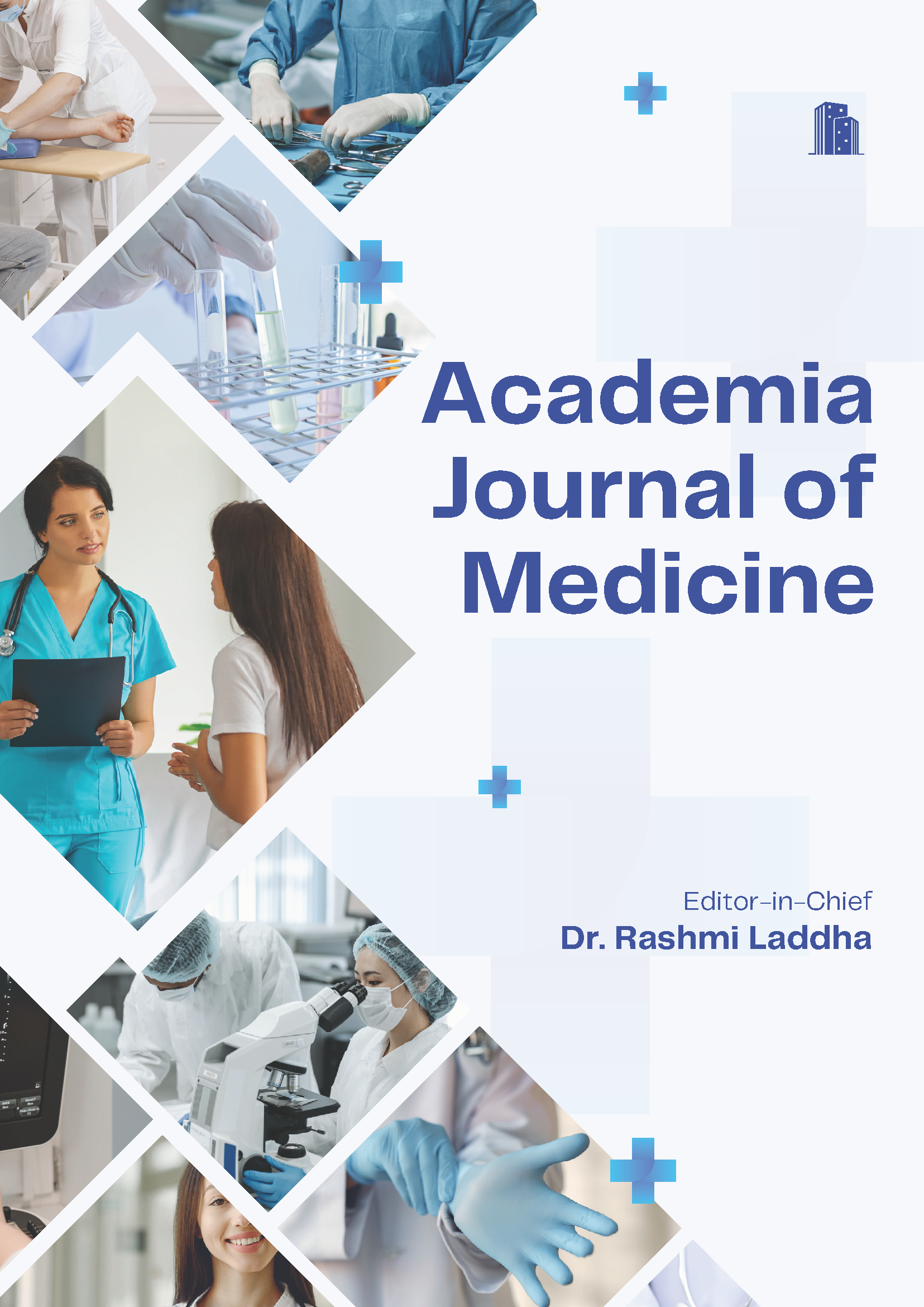A Study on Angiographic profile of Acute Coronary Syndrome in Smokers
Keywords:
Acute coronary syndrome, Left ventricles, ECG, AngiogramAbstract
Background: Coronary artery disease is a devastating disease precisely because an otherwise healthy person in the prime of life may die or become disabled without warning. The objectives of the study were to study the clinical profile, risk factors prevalence, angiographic distribution and severity of coronary artery stenosis in acute coronary syndrome (ACS) patients admitted in Cardiology Department of Cardiology Katuri Medical College & Hospital, Guntur. Subjects and Methods: A total of 208 patients of ACS were analyzed for various risk factors, angiographic patterns and severity of coronary artery disease in smokers vs non-smokers at Katuri Medical College, Andhra Pradesh. Results: Study group consisted of 208 subjects, of which 108(51.9%) subjects were smokers including all forms of tobacco use and 100 (48.1 Out of 108 study subjects in the smokers group, family history of CAD was present in 21 (19.4%) subjects. Killip class is not applicable to 13 (12%) study groups as they presented with Unstable Angina with ECG changes. Killip class 1 was most common presentation (67.6%) in smokers. 28 patients (25.9%) had LV dysfunction with EF < 50% by echocardiography. 80 patients (74.1%) had normal LV function. The mean EF was 55.56+/-10.16%. The median EF was 56.5%. LAD was type 3 in 100 (92.6%) patients and type 4 in 8 (7.4%) patients out of 108 study subjects. LAD type 3 was statistically significant with P value < 0.05 when compared with LAD type 4. No statistically significant difference was seen with respect to the Normal coronary arteries as CAG diagnosis between smokers and non-smokers (6.7% versus 8%, p>0.1, Not significant). Conclusion: Smokers were predominantly male and around 3 years younger than non-smokers. Diabetes mellitus and hypertension were less common among smokers and single-vessel disease was the more common angiographic finding for smokers as compared to 3-vessel disease for non-smokers. ST-segment elevation myocardial infarction in smokers despite younger age and the low atherosclerotic risk profile, in our region, emphasize the need for nicotine addiction management and smoking cessation campaigns at large and for pre-discharge counseling.
Downloads
References
1. Murray CJ, Lopez AD. Mortality by cause for eight regions of the world: Global Burden of Disease Study. Lancet. 1997;349(9061):1269–1276. Available from: https://dx.doi. org/10.1016/s0140-6736(96)07493-4.
2. Ockene IS, Miller NH. Cigarette Smoking, Cardiovascular Disease, and Stroke. Circulation. 1997;96(9):3243–3247. Available from: https://dx.doi.org/10.1161/01.cir.96.9.3243.
3. He J, Ogden LG, Bazzano LA, Vupputuri S, Loria C, Whelton PK. Risk Factors for Congestive Heart Failure in US Men and Women. Arch Intern Med. 2001;161(7):996–996. Available from: https://dx.doi.org/10.1001/archinte.161.7.996.
4. Muscat JE, Harris RE, Haley NJ, Wynder EL. Cigarette smok ing and plasma cholesterol. Am Heart J. 1991;121(1):141–147. Available from: https://dx.doi.org/10.1016/0002-8703(91) 90967-m.
5. Hung J, Lam JYT, Lacoste L, Letchacovski G. Cigarette Smoking Acutely Increases Platelet Thrombus Formation in Patients With Coronary Artery Disease Taking Aspirin. Circulation. 1995;92(9):2432–2436. Available from: https: //dx.doi.org/10.1161/01.cir.92.9.2432.
6. Campisi R, Czernin J, Schöder H, Sayre JW, Marengo FD, Phelps ME, et al. Effects of Long-term Smoking on Myocardial Blood Flow, Coronary Vasomotion, and Vasodilator Capacity. Circulation. 1998;98(2):119–125. Available from: https://dx. doi.org/10.1161/01.cir.98.2.119.
7. Fusegawa Y, Goto S, Handa S, Kawada T, Ando Y. Platelet Spontaneous Aggregation in Platelet-Rich Plasma Is Increased in Habitual Smokers. Thrombosis Res. 1999;93(6):271– 278. Available from: https://dx.doi.org/10.1016/s0049- 3848(98)00184-4.
8. Jha P, Peto R. Global Effects of Smoking, of Quitting, and of Taxing Tobacco. N Engl J Med. 2014;370:60–68. https:/ /dx.doi.org/10.1056/NEJMra1308383. Available from: https: //dx.doi.org/10.1056/NEJMra1308383.
9. Roberts NJ, Kerr SM, Smith SMS. Behavioral Interventions Associated with Smoking Cessation in the Treatment of Tobacco Use. Health Serv Insights. 2013;6:79–85. Available from: https://dx.doi.org/10.4137/FHSI.S11092.
10. Singh V, Gupta R. Prevalence of Tobacco Use And Awareness Of Risks Among School Children In Jaipur. J Assoc Physicians India. 2006;54:609–612.
11. Biswas PK, Dasbiswas A, Roy S, Roy D, Biswas A, Chatterjee SS. Risk factors and angiographic profile of coronary artery disease in young. J Indian Med Assoc. 1995;93(03):90–92.
12. Ahmad T, Alam MB, Khan A. Study on Risk Factors and Pat tern of Coronary Artery Involvement inYoung Acute Coronary Syndrome Patients. Bangladesh Heart J. 2017;32(1):40–44.
13. Kanitz MG, Giovannucci SJ, Jones JS, Mott M. Myocardial infarction in young adults: Risk factors and clinical features. J Emerg Med. 1996;14(2):139–145. Available from: https: //dx.doi.org/10.1016/0736-4679(95)02089-6.
14. Thun MJ, Carter BD, Feskanich D, Freedman ND, Prentice R, Lopez AD, et al. 50-Year Trends in Smoking-Related Mortality in the United States. N Engl J Med. 2013;368(4):351–364. Available from: https://dx.doi.org/10.1056/nejmsa1211127.
15. Ambrose JA, Barua RS. The pathophysiology of cigarette smoking and cardiovascular disease. J Am Coll Cardiol. 2004;43(10):1731–1737. Available from: https://dx.doi.org/10. 1016/j.jacc.2003.12.047.
16. Rigotti NA, Clair C, Munafò MR, Stead LF. Interventions for smoking cessation in hospitalised patients. Cochrane Database Syst Rev. 2012;5:1837–1837. Available from: https://dx.doi. org/10.1002/14651858.cd001837.pub3.
17. Aune E, Roislien J, Mathisen M. The ”smoker’s paradox” inpatients with acute coronary syndrome: a systematic review. BMC Med. 2011;9:97–101.
18. Rosenberg L, Palmer JR, Shapiro S. Decline in the Risk of Myocardial Infarction among Women Who Stop Smoking. N Eng J Med. 1990;322(4):213–217. Available from: https://dx. doi.org/10.1056/nejm199001253220401.
19. Rosenberg L, Kaufman DW, Helmrich SP, Shapiro S. The Risk of Myocardial Infarction after Quitting Smok ing in Men under 55 Years of Age. N Eng J Med. 1985;313(24):1511–1514. Available from: https://dx.doi.org/ 10.1056/nejm198512123132404.
20. Patrick DL, Cheadle A, Thompson DC, Diehr P, Koepsell T, Kinne S. The validity of self-reported smoking: a review and meta-analysis. Am J Public Health. 1994;84(7):1086–1093. Available from: https://dx.doi.org/10.2105/ajph.84.7.1086.
